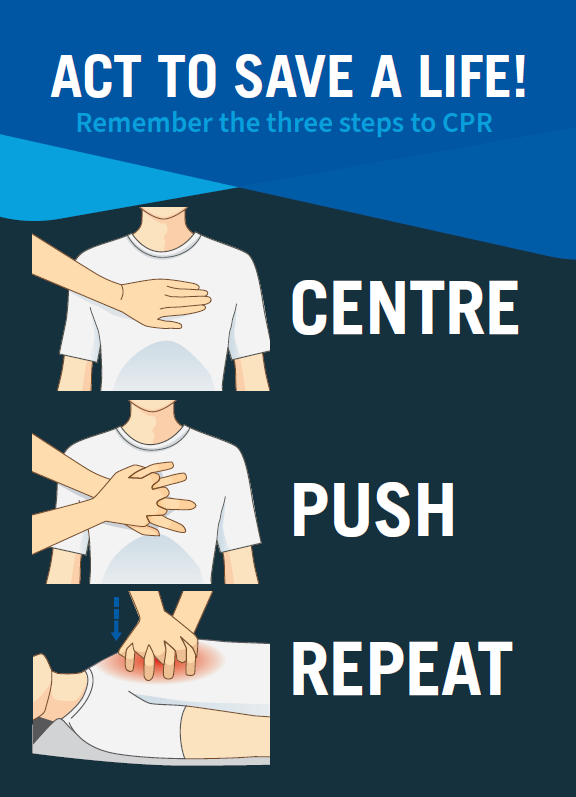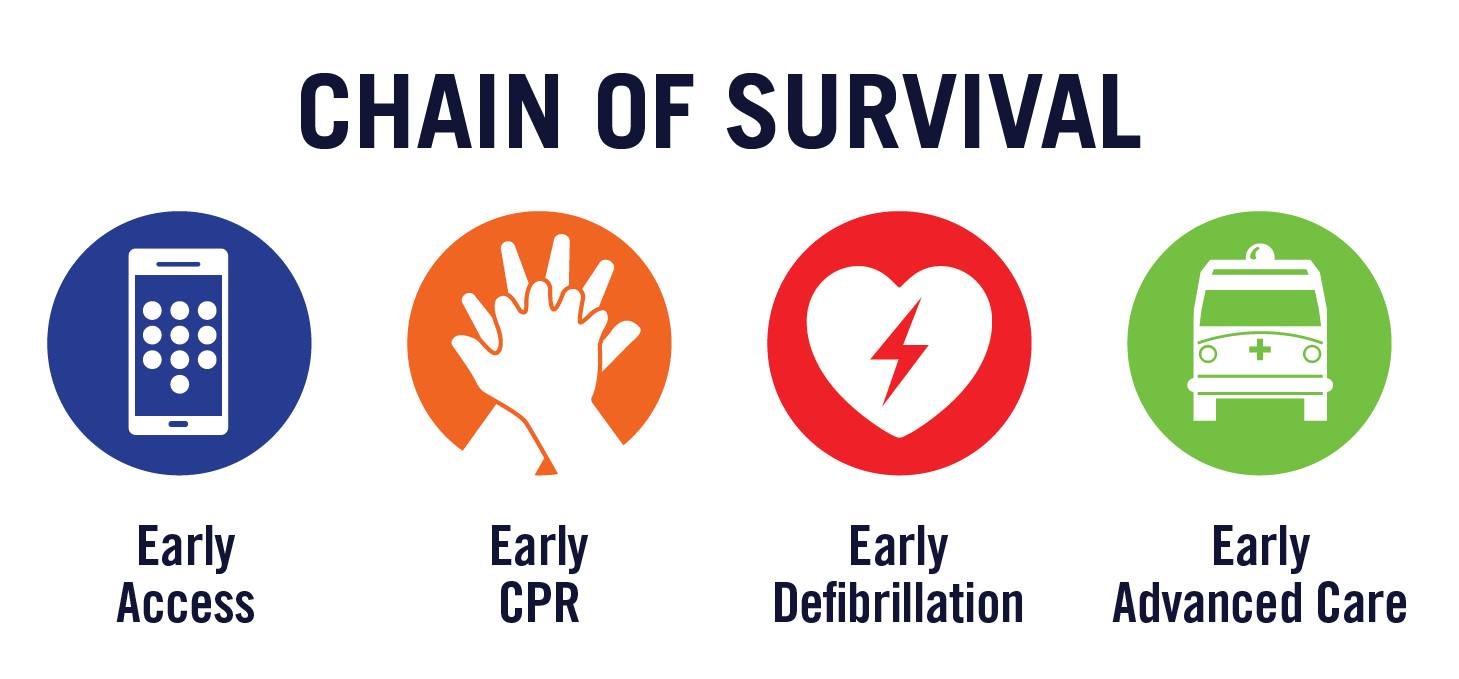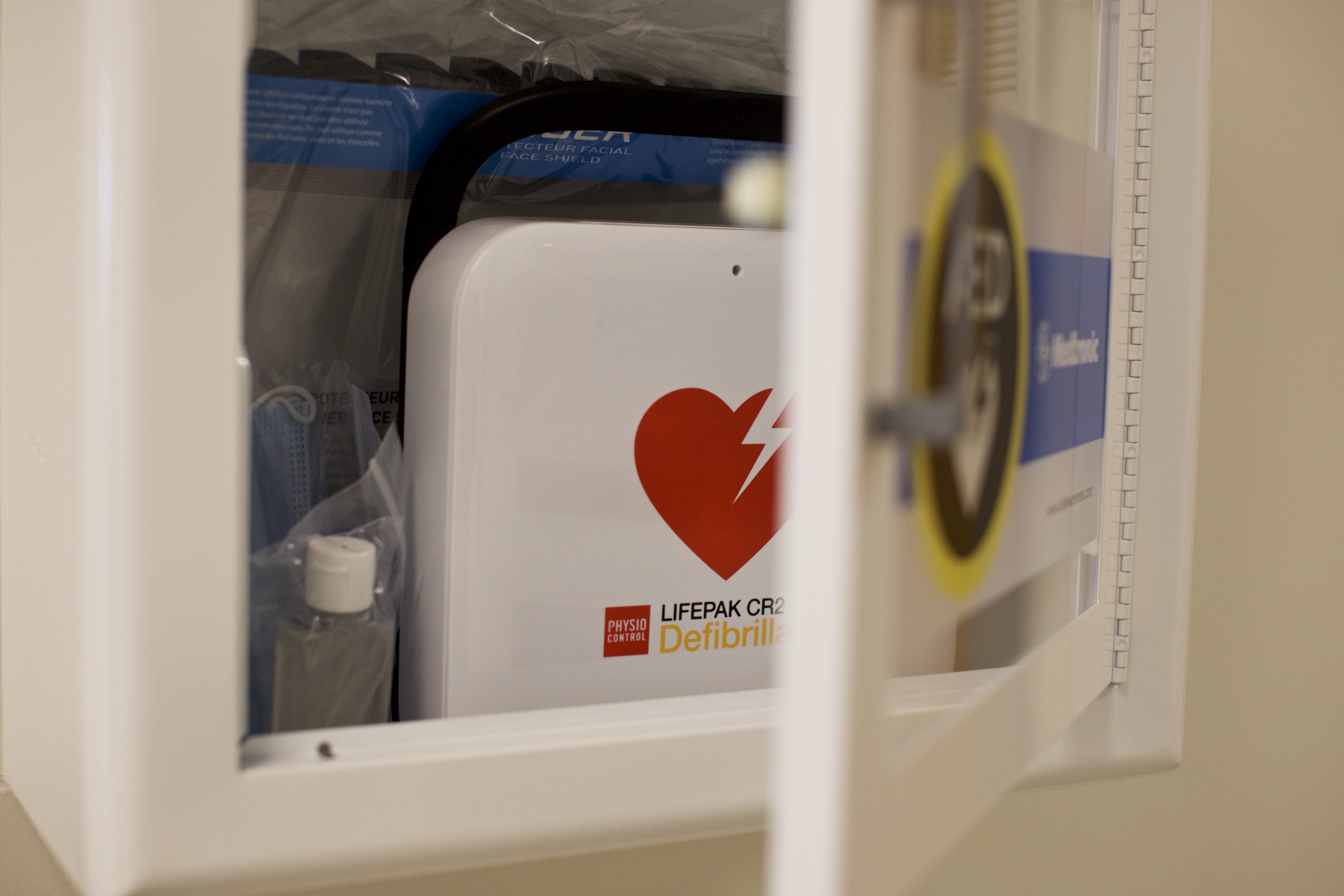CPR and AEDs
Register your AED
York Region Paramedic Services tracks the locations of AEDs across York Region. This information is shared with 911 dispatchers so they can let the caller know where to locate a nearby AED.
Register your AED with York Region Paramedic Services by emailing the completed AED Registration Form to @email.
By registering your AED, you will be kept up to date with any changes or new information on AED and CPR protocols.
Cardiopulmonary Resuscitation (CPR)
CPR is an emergency lifesaving procedure used when the heart stops beating, which is cardiac arrest. Early and effective CPR can significantly increase a person’s chance of survival during a cardiac arrest. With hands-only CPR, push hard and fast on the centre of the chest 100 to 120 times per minute (imagine the beat of the song "Stayin’ Alive"). This can help maintain blood flow to the brain and organs.
Since most cardiac arrests happen at home, learning how and when to perform CPR is crucial. While there are several levels of CPR available, learning CPR is easy. To learn more or search for an accredited CPR training agency in your area, visit the Heart and Stroke Foundation of Canada.

Chain of Survival
The Chain of Survival is a series of steps which provides the best chance of survival for someone suffering a cardiac arrest. Each link represents a vital step, and when these actions are promptly followed, a patient’s likelihood of surviving cardiac arrest improves. The four links in the Chain of Survival are:

The first three stages of the Chain of Survival can be action taken by a bystander. Quickly calling 911 and starting CPR combined with the use of an AED can increase the likelihood of survival by 75% or more!
Performing CPR
Check for signs: if a person does not respond, is not breathing or is breathing abnormally, they are likely in cardiac arrest.
Call 911: tell them you have found someone unconscious and not breathing normally.
Provide hands-only CPR: push hard and fast on the centre of the chest with one hand on top of the other, providing 100 to 120 compressions per minute. Do not give rescue breaths but continue compressions until paramedics or other responders arrive. The 911 dispatcher will coach you if needed.
Use an automated external defibrillator (AED): if possible, send someone to get an AED while you continue hands-only CPR. AEDs are very safe and simple to use – simply turn it on and follow the prompts.
Learn CPR in less than 90 seconds
Automated External Defibrillators (AEDs)
An AED is a small, portable device that can restart the heart of a person who is in cardiac arrest. It is simple to use and gives clear instructions, so you don’t have to be a medical professional to use it. It checks the heart’s electrical activity and only gives an electric shock to a heart that needs it.
Cardiac arrest can happen to anyone at any time, without warning. Using an AED could help save a life.

Frequently Asked Questions
What is cardiac arrest?
Cardiac arrest occurs when the heart has completely stopped beating or is in a dangerous rhythm and can’t circulate blood properly. This is different than a heart attack, which is when blood flow to the heart is blocked, but the heart is still pumping. An AED is programmed to recognize these ‘shockable’ rhythms when someone is in cardiac arrest and to deliver a shock or a defibrillation.
How important is it to do CPR and use an AED?
Someone’s life can depend on it!
- Studies show the chances of survival for an individual who is left untreated due to cardiac arrest decreases by 7 to 10% per minute
- Survival rates as high as 90% have been reported when a defibrillator has been applied within the first minute
- Survival rates for SCA are highest if the defibrillator’s shock has been given within the first three minutes of collapsing
- When the application of an AED is delayed beyond 10 minutes, the chances of irreversible brain damage increases significantly, and the survivability deceases to less than 2%
- Not every AED can be applied within one minute of a person suffering cardiac arrest, which is why Cardiopulmonary Resuscitation (CPR) is also important
- CPR that is performed prior to a defibrillator can “buy time” until an AED arrives. CPR will help preserve brain and heart function because compressions will circulate blood
What if I do CPR wrong?
The only bad CPR is the CPR that is not done at all. Early CPR and AED use can save a life!
Where can I find an AED?
AEDs are located throughout our community in schools, emergency shelters, sports and recreational facilities, Regional and government offices and private businesses. An AED in a public facility should be accessible to anyone. No training is required to use these devices.
Can anyone use an AED?
Yes! AEDs provide step-by-step visual and/or voice prompts to allow even untrained bystanders to use the device. They may look different, but they all work the same.
What is the process after using an AED?
If an AED is used, please contact York Region Paramedic Services at [email protected] as soon as possible. This will ensure information is collected, that the AED is ready to be used again and that supports and resources are shared with the bystanders who provided care.
Are there laws protecting bystanders who help?
Yes. The Chase McEachern Act and the Good Samaritan Law protect people who offer reasonable assistance such as CPR or use an AED on someone whose life is in danger.


